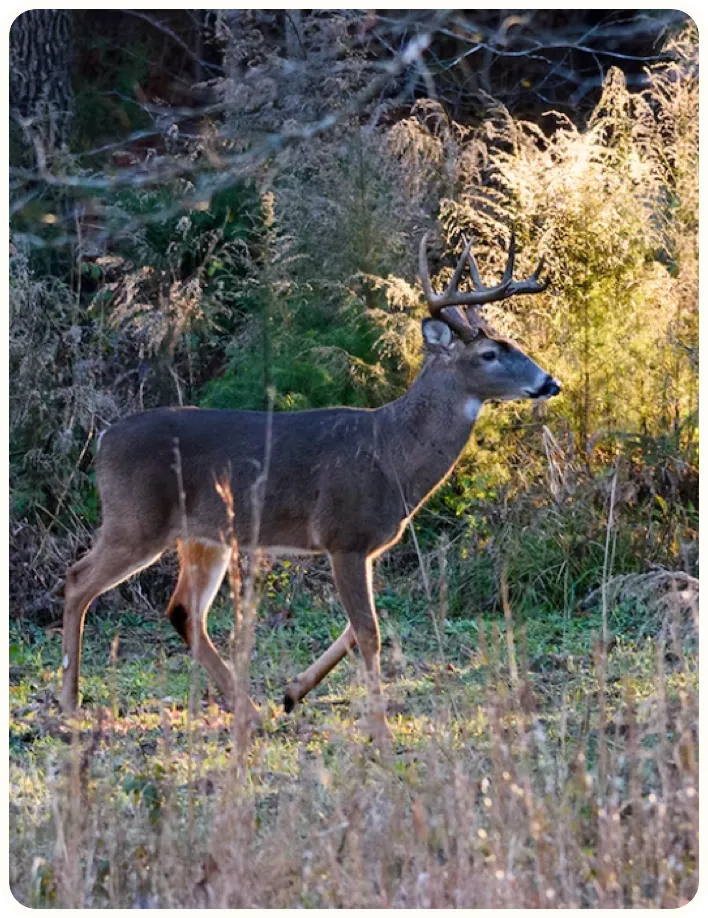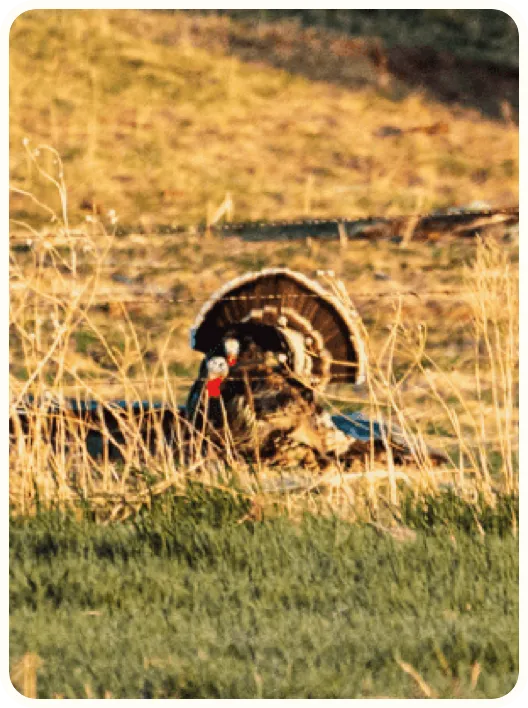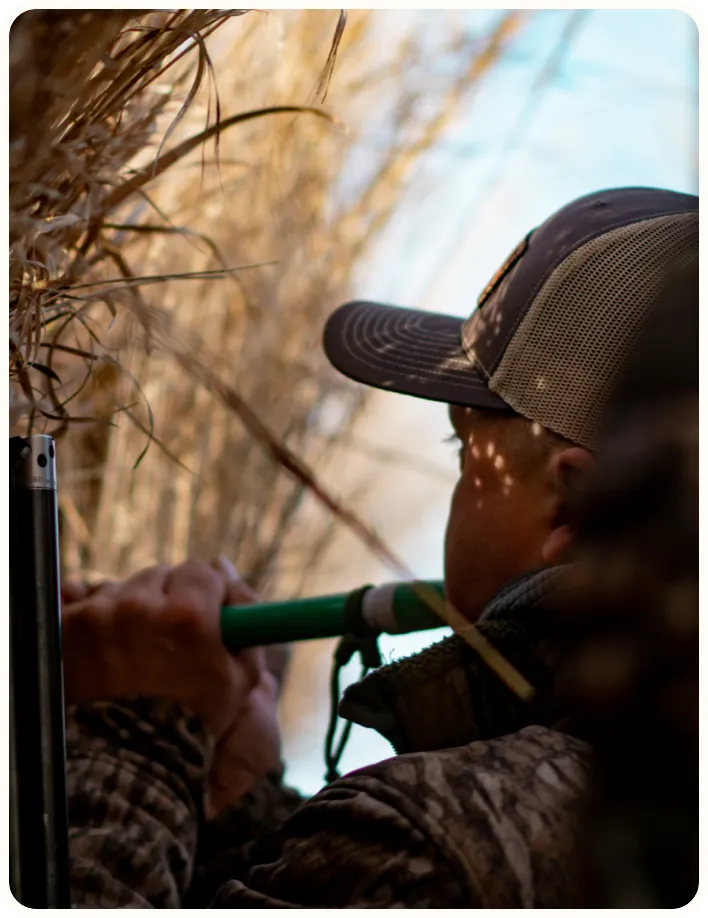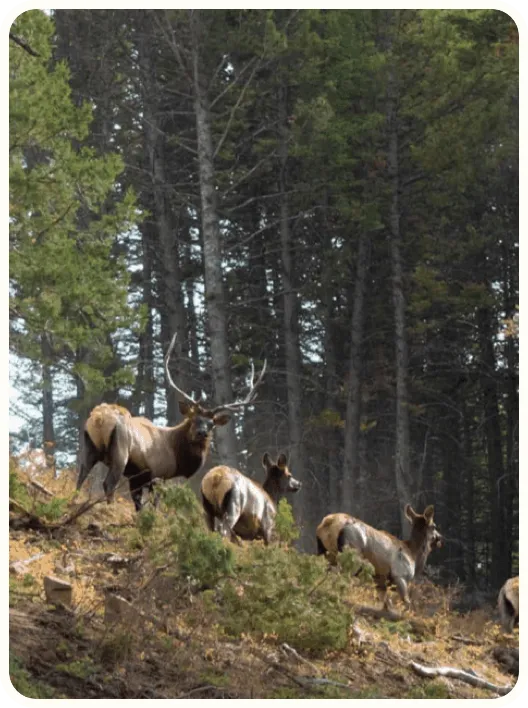Where to Hunt in New Mexico
Find the best places to Hunt in New Mexico. Book private land for your next outdoor adventure - fishing, hunting, bird-watching and more!
Hunting
RV & Camping
Fishing
Farm Tours
As seen on:
LandTrust offers 1,000,000+ acres of private land for you to access in 40+ states.
Explore private land to Hunt in New Mexico
5-day Antelope (Pronghorn) Black powder only with open sights
4,200 Acres at Bennett Ranch in Dell City, TX
Price$250 / Guest
5-Day Deer Hunt (Any Legal Weapon)
4,200 Acres at Bennett Ranch in Dell City, TX
Starting Price$50 / Guest
FOR LANDOWNERS
Earn more money from your farm or ranch.
Host verified guest on your property.
List for free and earn up to $60,000 per year.
Stay 100% in control of your property.
Popular species to hunt in New Mexico
New Mexico, a state renowned for its beautiful landscapes and abundant wildlife, offers hunting opportunities that are both challenging and rewarding. One of the most sought-after species in New Mexico is the Rocky Mountain Elk. These majestic creatures inhabit the northern regions of the state, particularly around the Sangre de Cristo Mountains. The elk hunting season typically begins in September and extends through December, with archery, muzzleloader, and rifle hunts available. Another popular species is the Mule Deer, found in abundance across New Mexico's varied terrain - from desert lowlands to high mountain forests. The hunting season for Mule Deer usually starts in October and lasts until late January. Hunters should note that these deer are known for their keen senses and elusive nature. For bird hunters, New Mexico offers an exceptional experience with its wild turkey populations. The Merriam's Turkey is native to the mountainous regions of New Mexico and provides a unique challenge for hunters due to its wariness and agility. Lastly, don't overlook the Pronghorn Antelope - a speedy resident of New Mexico's plains. Known as one of North America's fastest land animals, hunting pronghorn requires strategic planning and patience but promises an adrenaline-fueled adventure. Remember, regardless of your chosen quarry, always adhere to local hunting regulations to ensure sustainable practices and respect for New Mexico's rich wildlife heritage.Popular counties to hunt in New Mexico
New Mexico, a haven for hunting enthusiasts, boasts several counties that are particularly renowned for their game abundance and diversity. Rio Arriba County, located in the northern region of the state, is famed for its trophy elk and mule deer populations. This county's diverse terrain offers a thrilling challenge to even the most seasoned hunters. Catron County, another hotspot, is home to vast tracts of public lands teeming with antelope and black bear. For those seeking the thrill of big game hunting, Socorro County offers opportunities to hunt oryx and ibex in addition to its plentiful deer and elk populations. Lincoln County in south-central New Mexico is a turkey hunter's paradise with its dense forests providing ideal habitats. Meanwhile, Grant County's Gila National Forest offers unparalleled hunting experiences with its rich wildlife including mountain lions, javelinas, and bighorn sheep. Each county provides unique hunting experiences catered to different preferences and skill levels. Remember to always check local regulations and secure necessary permits before embarking on your hunting adventure in these prime New Mexico locations.Popular hunting methods in New Mexico
In the terrains of New Mexico, hunters can engage in several hunting methods that cater to their unique skills and preferences. One of the most popular methods is spot and stalk hunting, which is particularly effective for pursuing big game species such as elk, mule deer, and antelope. This method involves spotting the animal from a distance, usually with binoculars or spotting scopes, then strategically stalking it on foot while staying downwind to avoid detection. Another prevalent method in New Mexico is still hunting. This technique requires patience as hunters move slowly through the habitat of their target species, stopping frequently to scan their surroundings for signs of game. It's an excellent method for hunting turkey and smaller game animals in the dense forests and brushy areas. For waterfowl, like ducks and geese, setting up decoys near bodies of water at dawn or dusk can be highly effective. This method often involves using calls to attract birds within shooting range. Bowhunting is also gaining popularity in New Mexico due to its challenging nature and extended seasons. Whether you're using a compound bow or traditional recurve, mastering this skill can provide a rewarding experience. No matter what method you choose, remember that success in hunting comes with understanding your prey's habits and habitats, as well as respecting local regulations for sustainable hunting practices.Discover More
Counties in New Mexico
Species in New Mexico
Activities in New Mexico
Host in New Mexico
- Bernalillo County, New Mexico
- Catron County, New Mexico
- Chaves County, New Mexico
- Cibola County, New Mexico
- Colfax County, New Mexico
- Curry County, New Mexico
- De Baca County, New Mexico
- Dona Ana County, New Mexico
- Eddy County, New Mexico
- Grant County, New Mexico
- Guadalupe County, New Mexico
- Harding County, New Mexico
- Hidalgo County, New Mexico
- Lea County, New Mexico
- Lincoln County, New Mexico
- Los Alamos County, New Mexico
- Luna County, New Mexico
- Mckinley County, New Mexico
- Mora County, New Mexico
- Otero County, New Mexico
- Quay County, New Mexico
- Rio Arriba County, New Mexico
- Roosevelt County, New Mexico
- Sandoval County, New Mexico
- San Juan County, New Mexico
- San Miguel County, New Mexico
- Santa Fe County, New Mexico
- Sierra County, New Mexico
- Socorro County, New Mexico
- Taos County, New Mexico
- Torrance County, New Mexico
- Union County, New Mexico
- Valencia County, New Mexico
Montana Hunting Units
Nebraska Hunting Units
Kansas Hunting Units
North Dakota Hunting Units
Turkey Hunting
U.S. Hunting Units



